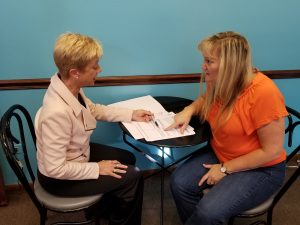I remember fifteen years ago when I started as an Admissions and Marketing Director in the senior living industry, my future boss took me on a complete tour of the community. Or so I thought.
The community included independent living, where most of the seniors were well off mentally and ambulated with, at worst, a cane. The next level of care was assisted living, which at the time was an extension of independent living. But, the residents at that level received “standby” assistance with bathing, dressing, toileting, transferring, eating, and walking. At worst, seniors there ambulated with the help of a walker. No wheel chairs were allowed. Last, there was nursing home level, or the dreaded fifth floor that was reserved for residents who could no longer function at the independent living or assisted living level. Most were in wheel chairs and needed total assistance with their activities of daily living. Or, some suffered memory impairment and were at risk for wandering. The fifth floor was equipped with a security code for the elevator and an alarm for those residents who might attempt to leave unattended.
When my boss conducted the tour, he showed me the independent living and the assisted living areas, both of which were places where the residents appeared to be happy. However, after I began working there, I was sent to complete a task on the fifth floor where the residents needed total assistance with everything. Being new to the industry, I was like many of my clients taking a tour of a nursing home for the first time. I was nervous and terrified! I rushed down to my boss’s office and told him that I was exceedingly upset that I was not told that the fifth floor existed. As time went on, I grew to love the residents on the fifth floor. There we were encouraged to take a break from the regular tasks of the day, attend scheduled activities, or just talk.
 Chicago Senior Living Advisors Blog
Chicago Senior Living Advisors Blog


